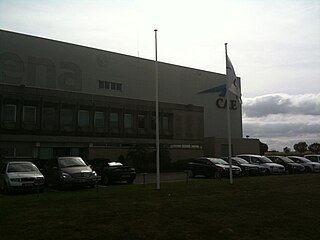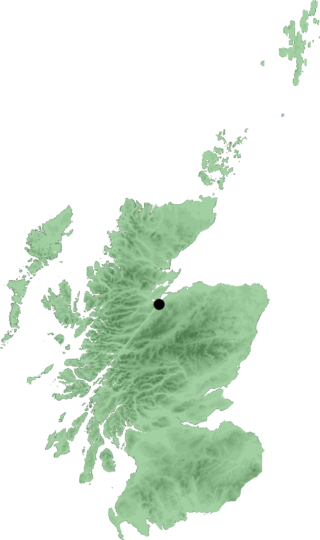
An aircraft pilot or aviator is a person who controls the flight of an aircraft by operating its directional flight controls. Some other aircrew members, such as navigators or flight engineers, are also considered aviators because they are involved in operating the aircraft's navigation and engine systems. Other aircrew members, such as drone operators, flight attendants, mechanics and ground crew, are not classified as aviators.

Flight training is a course of study used when learning to pilot an aircraft. The overall purpose of primary and intermediate flight training is the acquisition and honing of basic airmanship skills.
Instrument rating refers to the qualifications that a pilot must have in order to fly under instrument flight rules (IFR). It requires specific training and instruction beyond what is required for a private pilot certificate or commercial pilot certificate, including rules and procedures specific to instrument flying, additional instruction in meteorology, and more intensive training in flight solely by reference to instruments.

In most countries one is required to obtain a glider pilot license (GPL) or certificate before acting as pilot of a glider. The requirements vary from country to country.

A private pilot licence (PPL) or private pilot certificate is a type of pilot licence that allows the holder to act as pilot in command of an aircraft privately. The basic licence requirements are determined by the International Civil Aviation Organization (ICAO), but implementation varies from country to country. According to ICAO, an applicant must be at least 17 years old, demonstrate appropriate knowledge and skill, and hold at least a Class 3 medical certificate. Different PPLs are available for different categories of aircraft, such as aeroplane, helicopter, airship, etc., and are not interchangeable, although experience from a PPL in one category may be credited towards the issue of another.
The airline transport pilot license (ATPL), or in the United States of America, an airline transport pilot (ATP) certificate, is the highest level of aircraft pilot certificate.
A commercial pilot licence (CPL) is a type of pilot licence that permits the holder to act as a pilot of an aircraft and be paid for their work.
Pilot licensing or certification refers to permits for operating aircraft. Flight crew licences are issued by the civil aviation authority of each country, which must establish that the holder has met minimum knowledge and experience before issuing licences. The licence, along with the required class or type rating, allows a pilot to fly aircraft registered in the licence issuing state.
Pilot licensing in the United Kingdom is regulated by the Civil Aviation Authority (CAA).

A flight instructor is a person who teaches others to operate aircraft. Specific privileges granted to holders of a flight instructor qualification vary from country to country, but very generally, a flight instructor serves to enhance or evaluate the knowledge and skill level of an aviator in pursuit of a higher pilot's license, certificate or rating.

The pilot in command (PIC) of an aircraft is the person aboard an aircraft who is ultimately responsible for its operation and safety during flight. This would be the captain in a typical two- or three-pilot aircrew, or "pilot" if there is only one certificated and qualified pilot at the controls of an aircraft. The PIC must be legally certificated to operate the aircraft for the specific flight and flight conditions, but need not be actually manipulating the controls at any given moment. The PIC is the person legally in charge of the aircraft and its flight safety and operation, and would normally be the primary person liable for an infraction of any flight rule.

A type rating is an authorization entered on or associated with a pilot license and forming part thereof, stating the pilot's privileges or limitations pertaining to certain aircraft type. Such qualification requires additional training beyond the scope of the initial license and aircraft class training.
In Australia, pilot licences are issued by the Civil Aviation Safety Authority. Licences are issued for different categories of aircraft, including aeroplanes and helicopters.

CAE Oxford Aviation Academy Brussels - Sabena Flight Academy is an aviation training organisation created in 1953, and located in Steenokkerzeel (Belgium). The school is now part of CAE Global Academy. The training is performed in Brussels, in Mesa at CAE Oxford Aviation Academy Phoenix . Sabena Flight Academy is one of the oldest airline transport pilot schools in Europe.
The National Private Pilot Licence (NPPL) is a licence to fly United Kingdom registered aircraft within the United Kingdom. It is a more basic licence than the private pilot licence (PPL), and cannot be used to fly all aircraft. It can be used to fly basic aircraft such as vintage aircraft or kit-built aircraft. To fly many basic aircraft such as the Cessna 172, it is necessary to upgrade to at minimum a light aircraft pilot licence (LAPL).

Highland Aviation Training Ltd is an Approved Training Organisation at Inverness Airport. Highland Aviation offers flight training and aircraft maintenance, including Piper and Cessna Aeroplanes and Autogyro/Rotorsport Gyrocopters.
The light aircraft pilot licence (LAPL) is a pilot license allowing the pilot to fly small aircraft. It is issued in EASA member states and the United Kingdom. Unlike most other licences, it is not covered by the ICAO framework and is usually not able to be used in other states or regulatory areas.

A pilot logbook is a record of a pilot's flying hours. It contains every flight a pilot has flown, including flight time, number of landings, and types of instrument approaches made. Pilots also log simulator time, as it counts towards training.
A night rating permits an aircraft pilot to fly at night under visual flight rules. The alternative is flight by instrument flight rules (IFR), under which visual reference to terrain and traffic is not required.
A multi-crew pilot licence (MPL) is a pilot licence that permits an aircraft pilot to act as co-pilot of a multi-crew aircraft.








